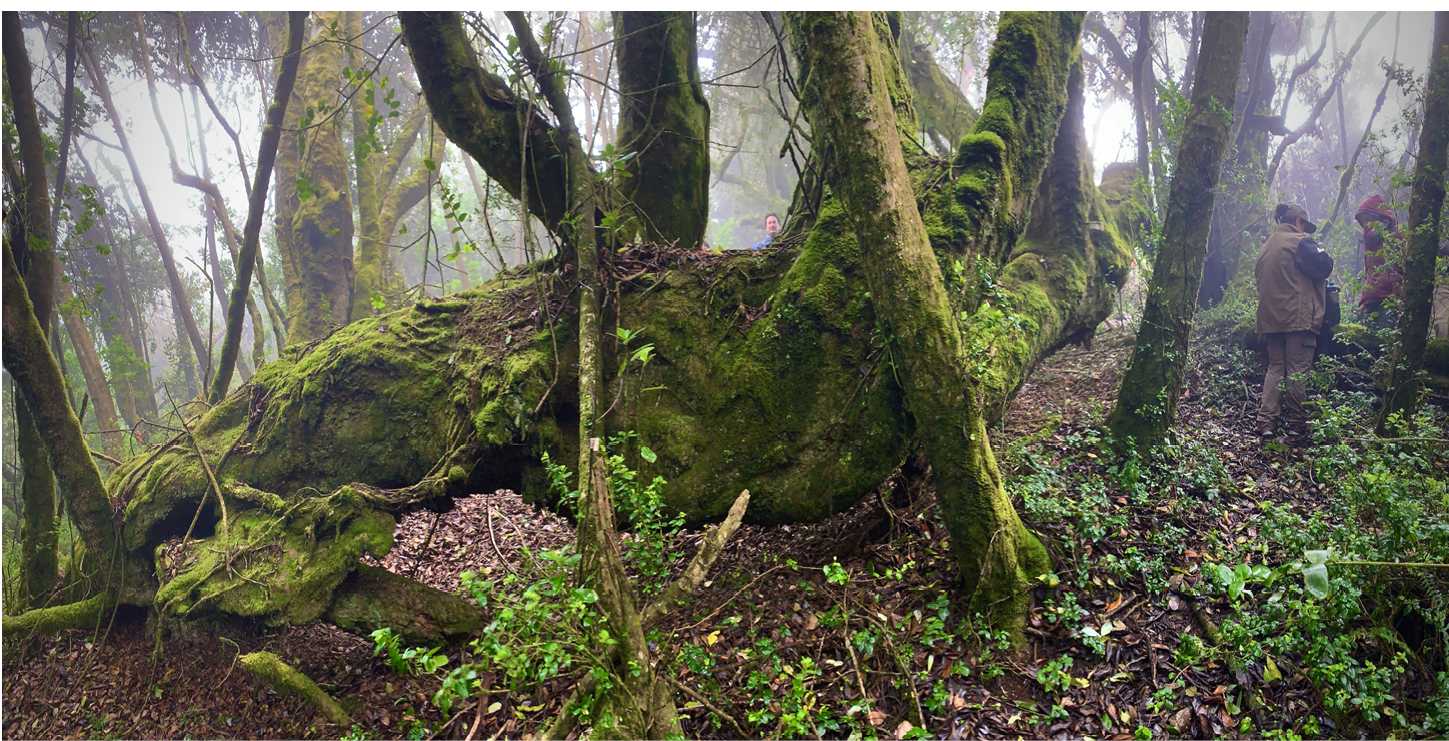- Home
- Publications
- PAGES Magazine
- Fog-dependent Forests In Southern Atacama Face Threat From Drought
Fog-dependent forests in southern Atacama face threat from drought
Paul Szejner, D. Christie, C. LeQuesne and A.G. Gutierrez
Past Global Changes Magazine
31(1)
36
2023
Paul Szejner1,2, D. Christie3,4, C. LeQuesne3 and A.G. Gutierrez5,6
Dr. Szejner was granted a PAGES–IAI Fellowship and worked at the Universidad Autónoma de México from July to August 2022. His goal was to establish and strengthen a collaborative network between tree-ring research groups from México and Chile, and to analyze stable isotopes in tree rings.
The fog-dependent forest on the southern edge of the Atacama Desert is one of the most fantastic and enigmatic woodlands one will ever see. This ecosystem is formed by patches of temperate rainforest located within a semiarid matrix at the southern edge of the Atacama Desert.
The Fray Jorge National Park is at the top of the coastal mountain range, facing the Pacific Ocean. These forests are relict formations from a past continuous distribution in the Pleistocene (Villagrán et al. 2004). This unique biogeographical landmark has been preserved due to exceptional orographic conditions, allowing for fog formation from the clouds from the Pacific Ocean. The fog is collected by an intricate vegetation structure consisting of the crowns of trees, vines, lianas, ferns, mosses, and fungi (Fig. 1). The condensed and trapped water drops into the soil, allowing the forest to thrive for millennia.
Trees often reach more than one meter in diameter and can be as old as 250 years (Gutiérrez et al. 2008). These forests experience natural changes as part of their inherent development processes, with constant canopy gap formation contributing to their unique structure and composition (del-Val et al. 2006; Gutiérrez et al. 2008). There are two central species dominating this enigmatic forest: the most abundant, olivillo (Aextoxicon punctatum), followed by canelo (Drimys winteri). These are two dominant species from the evergreen temperate rainforests typically found around 1000 km south of this site.
Thanks to the support from this fellowship, we investigated how the ongoing regional megadrought (MD) in Central Chile (Garreaud et al. 2020) affects the Fray Jorge forests. This interest arises from the generalized concern in the region about the environmental, social, and economic impact of the current drought occurring in Central Chile, which is seen as a forecast of the climatic conditions that will prevail under current climate change scenarios (Cook et al. 2022; Garreaud et al. 2020). Increasingly, dry conditions and rising temperatures threaten forested ecosystems. Therefore, we need a better understanding of how trees respond to the recent regional aridity trends and the local oceanic fog dynamics.
Our objective in this study was to address questions on the effects of the current MD on fog variability and water availability on the forest response in this unique fog-dependent ecosystem. For this, we used conventional tree-ring techniques and stable isotopes (Belmecheri et al. 2022). We conducted our fieldwork in July 2022. We collected tree-ring samples of olivillo to generate new long-term records of tree-ring width chronologies, along with their oxygen (δ18O) and carbon (δ13C) isotopes.
In addition, we organized a workshop at Universidad Austral de Chile to discuss the applications and best practices for interpreting stable isotopes in tree rings. We also organized a series of lectures at the Fray Jorge National Park (La Serena, Chile) for the park rangers and staff to share some past findings, aiming to increase awareness about the effects of climate change on this unique ecosystem.
The outcomes of this fellowship will provide insights into the impact of the current MD on these forests, and reconstruct the tree responses of these unique forests in Chile. This effort will help to interpret changes in intrinsic water-use efficiency, vapor-pressure deficit changes, and potential changes in water sources that these fog-dependent forests have been experiencing over the last few decades. Additionally, our collaborative project will strengthen the academic relationship between Mexican and Chilean research centers and universities, promoting studies about climate change and its effects on the biogeochemical cycles recorded in the stable isotopes fixed in wood for centuries. Finally, this project will help initiate a Pan-American research program of stable isotope analyses in tree rings across Latin America.
ACKNOWLEDGEMENTS
PAGES-IAI International Mobility Research Fellowship Program for Latin American and Caribbean early-career scientists on past global changes. FONDECYT N°1201411, FONDAP-ANID 1522A0001. UNAM-PAPIIT IA201621. Grant ANID PIA/BASAL FB210006.
affiliations
1Instituto de Geología, Universidad Nacional Autónoma de México, Mexico City, México
2Bioeconomy and Environment Unit, Natural Resources Institute Finland, Helsinki, Finland
3Laboratorio de Dendrocronología y Cambio Global, Instituto de Conservación Biodiversidad y Territorio, Universidad Austral de Chile, Valdivia, Chile
4Center for Climate and Resilience Research (CR) 2, Santiago, Chile
5Departamento de Ciencias Ambientales y Recursos Naturales Renovables, Universidad de Chile, Santiago, Chile
6Instituto de Ecología y Biodiversidad, Santiago, Chile.
contact
Paul Szejner: paul.szejner luke.fi (paul[dot]szejner[at]luke[dot]fi)
luke.fi (paul[dot]szejner[at]luke[dot]fi)
references
Cook BI et al. (2022) Nat Rev Earth Environ 3: 741-757
del-Val E et al. (2006) Ecosystems 9: 598-608
Garreaud RD et al. (2020) Int J Climatol 40: 421-439
